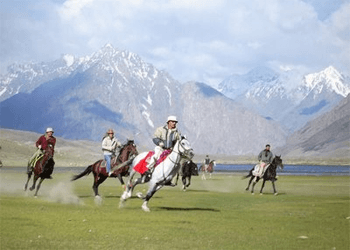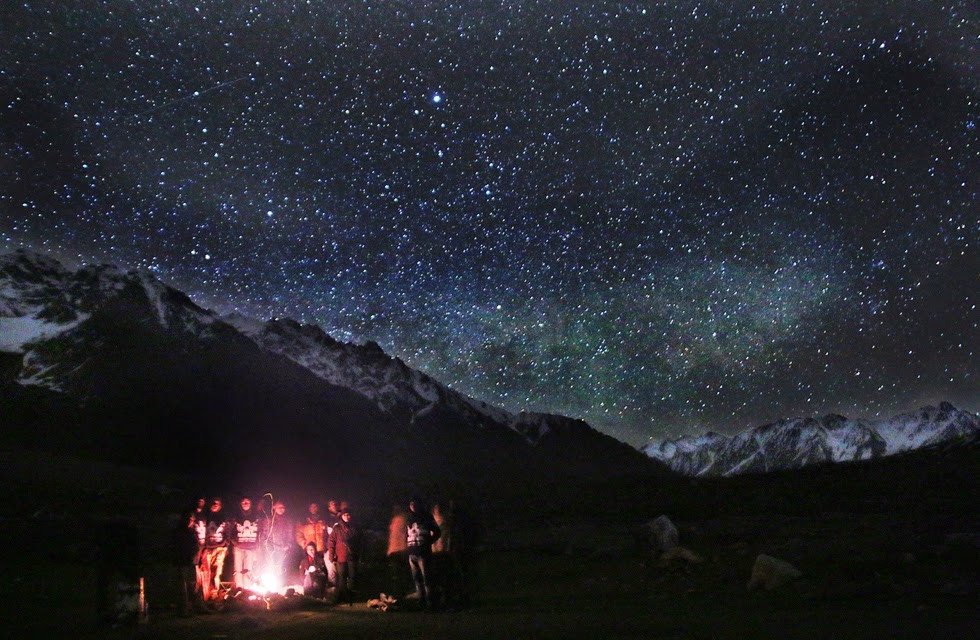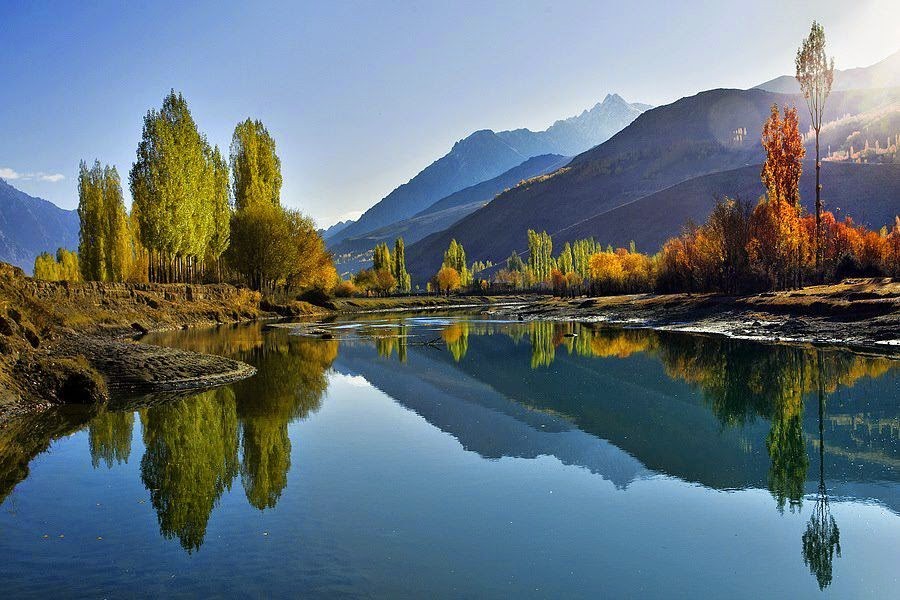Polo…origin in Central Asia….6th century BC….Persian national game in
the 6th century AD……In 1935 UK administrator for Gilgit-Baltistan, A.H. Cobb ordered….make a huge polo ground in Shandur….named “Mas Junali”…..‘Mas’ is Moon and Junali is pologround, as Cobb
was found of playing polo in moon night….
…….
Shandur, Gilgit and Baltistan. The nicest part of it all is the gorgeous night sky.
Beautiful place to play polo no doubt. But it also has a gorgeous lake to go with it. Why not advertise this as the coolest place in the world to play water polo? Just as nice as ice fishing in the Great Lakes.
……
[ref. Wiki] Shandur invites visitors to experience a traditional polo tournament which since 1936 has been held annually in the first week of July between the local teams of Chitral and Ghizer.
The tournament is held on Shandur Top, the highest polo ground in the
world at 3,700 meters (the pass itself is at 3,800 meters). The festival
also includes Folk music, dancing and a camping village is set up. The polo tournament is featured in the first episode of Himalaya with Michael Palin.
……….
Various teams of Gilgit-Baltistan and Chitral have always played the
game of polo closest to its original form. During the early 20th
century, the British in neighboring India were the patrons of the game.
….
Free-styled mountain polo is arguably polo in its purest form. This
version of the game played at Shandur-Top has attained legendary status
and is of great interest to international and domestic adventure
tourists alike. There are no umpires and there are no holds barred.
The
rules are: There are no rules! In “The Roof of the World”
Amin/Willets/Tetley write: “by comparison, an American Wild West rodeo
might pass for choir practice.” As one player once mentioned: “You can
ride head-on into the opponent, if you dare.”
….
In order to decide the final teams to play at the Shandur Polo Festival preliminary matches are played both in Gilgit and Chitral
in which the best horses and players are chosen for the final games by
the local juries. The festival begins on the 7th of July with a polo
match between the local teams of CHITRAL KPK with the guest teams coming
from GHIZER, GILGIT BALTISTAN. During the course of the tournament A,
B, C and D teams of Gilgit and Chitral
battle it out on the polo field.
Each team has six members with 2-4
reserve players in case of injury etc. The match duration is usually one
hour. It is divided into two halves, with a 10 minutes interval. During
intervals the locals enthrall the audiences with traditional and
cultural performances. The game decided in favour of the team scoring
nine goals. The final is held on 9 July.
….
The field measures about 200 meters by 56 meters (normal polo field
is about 270m by 150m), with 60 cm high stone walls running the length
of the field on both sides instead of boards. As six players make up one
side, the field can get fairly crowded. This has the advantage of
slightly slowing down the pace, which, all things considered, is
probably somewhat safety-enhancing. Players rarely wear helmets, The
horses’ legs often have no bandages, and mallets often have no grips or
straps.
….
In 1935 UK Administrator for Gilgit-Baltistan A.H. Cobb ordered Niat Qabool Hayat Kakakhail
to make a huge pologround in Shandur, soon he made a pologround by his
people and named that polo ground as “Mas Junali”. In Khowar language,
‘Mas’ is spoken for Moon and Junali is spoken for Pologround, as Cobb
was found of Playing polo in moon night.
Cobb impressed by his great
service and wished to give him a prize for his unreachable service, but
he didn’t want to get any prize of his works. Niat Qabool Hayat Kakakhail
presented his prize for collect benefit and said to Cobb to bring trout
fishes. Cobb brought trout fishes in short time from London and dropped
them into the River Ghizer. Due to this little service, Directorate of
Fisheries had been established and hundreds of people got employed. Now
the weight of those fishes in Hundarap Lake cross 24 kg and in Baha Lake
Khukush Nallah, their weight crossed 40 kg.
….
So Mas Junali became a source of relation between the people of
Gilgit-Baltistan and Chitral. The Shandur Polo Festival opens a door
step to the people of the world to enjoy their selves. Many of the
people from entire world come here to watch polo match played between
Chitral and Ghizer.
Polo is an equestrian sport with its origin embedded
in Central Asia dating back to 6th century BC. At first it was a training game for cavalry units for the King’s Guards or other Elite troops.
To the warlike tribesmen who played polo with as many as 100 players to
a side, it was a miniature battle. It became a Persian national game in
the 6th century AD. From Persia, the game spread to Arabia, then to Tibet, China and Japan. In China, in the year 910, death of a favourite relative in a game prompted Emperor Apaochi to order beheading of all players.
…
Historically, polo being the king of games was played between small
kingdoms, villages and rival groups of Gilgit Agency. From 1936 onwards
polo tournaments were held annually at Shandur (then part of autonomous
princely state of Kashmir) at the patronage of the British from
neighboring India. The three day Shandur Polo Festival has developed
steadily in recent years into the massive celebration of mountain polo
that it is today.
….
…….
regards



